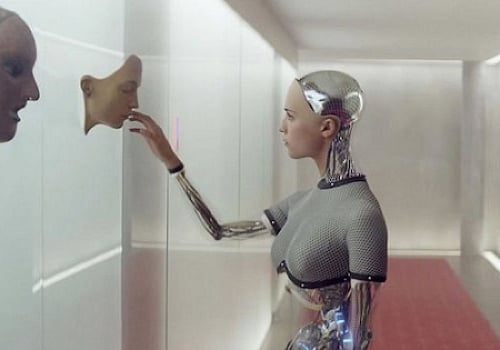Our cybernetic overlords are already among us. Luckily, they’re not all threatening...yet.
Robots have become a mainstay of American popular culture over the past century, permeating film, literature, and art. The word "robot" itself was coined in a play by the Czech writer Karel Čapek!
Their appearances are sometimes friendly, sometimes menacing, but always strange. While the stories depicted by these works are a far cry from our reality, the advent of robotics and artificial intelligence as serious fields of study across all industries has ensured our mechanized fellows are here to stay.
Given the recent surge of this technology, it’s important for the savvy citizen of today to obtain a working knowledge of robots, robotics, and automation.This guide will give you the foundation upon which you can build your robotics expertise.
What is robotics?
The romanticization of machines can sometimes hide the core truth of robotics: A robot is a device meant to help humans accomplish tasks.
What is the purpose of robotics?
Robotics is a subfield of engineering dedicated to the research, development, and operation of robots. Robotics engineers study how a constructed physical system can supplement or perform a task, or interface with new technology.
Robots are like tools. A saw has no choice in how a carpenter uses it, just like there is no choice or thought implied in a robot’s actions. It is simply wielded by the human hand through the coding it was programmed to follow.
Robotics researchers find new ways robots can be used to supplement or replace human activity. It’s an incredibly diverse field that produces all sorts of machines with as many practical applications as stars in the sky.
What are the main components of a robot?
Robots come in all shapes and sizes all of which require different parts for construction. These are the three general categories of robotics:
Computation
While saying a robot has a “brain” does a disservice to what we have in our own heads, they do have a central processing unit called a controller that determines the actions they take in a given situation. These controllers can be programmed to complete tasks as simple as turning a screw or as complex as emulating human social graces and expressions.
Movement
As autonomous units, robots need specific mechanical parts to allow them to move freely without direct physical intervention from their human operators. These parts include things like wheels that allow them to travel and motors that propel them. Other components such as grippers allow them to interface with the world around them in a direct and targeted way.
Sensors
Sensors are what allow robots to recognize their surroundings. They give them the ability to determine things like the size and shape of an object or detect heat, cold, or other properties. These capabilities allow the processors to collect data about the surrounding environment, then move accordingly.
The function of robotics
There are many competing definitions of what actually constitutes a “robot,” but they can be categorized into two main groups:
- Independent functions: no direct human control, replaces human activity
- Dependent functions: Interfaces directly with humans, supplements human activity
Independent robots
Independent robots are the classic conceptualization of robots: completely autonomous systems that can follow their programming without the need for direct physical intervention from a human operator.
The practical applications of independent robots in society are varied. However, they sometime replace humans entirely for the execution of specific tasks. These tasks are often mindless routines or dangerous jobs. For example, robots have been one of the principal drivers behind the automation in factories as well as having found a home in law enforcement as a way to remotely dispose of bombs.
This form of robots has been the most disruptive to society at large; all but eradicating many low-wage manufacturing jobs and creating autonomous weapons of war that have been adopted by the U.S. Military.
Tip: Some robots don't have physical forms at all -- they exist entirely in software that executes tasks on a computer. If you want to learn more about how these could help your business, check out G2's Robotic Process Automation category for the best software on the market!
Dependent robots
A more recent development in robotics has been the creation of non-autonomous robots that are meant to interface with humans in ways that enhance their already existing actions. This can commonly be found in medicine and the field of prosthetics where robots are programmed to act in tandem with the human body itself, such as in the case of Johnny Matheny, the first man to live with an advanced mind-controlled robotic arm.
While Johnny’s is still an exceptional case, it does highlight the growing trend of collaborative robots—“cobots” for short— that exist side by side with humans rather than replacing them altogether like their more traditional cousins.
The future of robotics: will robots take my job?
While we probably won’t see the Terminator hunting anyone down in our lifetimes, the field of robotics presents us with visions of fantastical futures that hardly resemble our present-day society. In particular, the intersection of robotics and AI provokes a few questions about the nature of robotics moving forward. As we make smarter and smarter machines, how will they integrate with their human creators? What roles will they play in society?
Attempting to predict the future serves little purpose; great strides have been made in artificial intelligence and robotics in the past few years, but the development of intelligent machines is still a nascent field. Predicting what they will look like at the height of their development would be like asking Thomas Edison to describe an iPhone. The cultural framework simply doesn’t yet exist.

This by no means precludes us from setting some guiding principles in the present to ensure harmonious adaptation of this technology in the future. In fact, people such as acclaimed science-fiction writer Isaac Asimov have been doing so for nearly 80 years through works like the Foundation Trilogy. Ultimately, only constant critique and evaluation will allow us to advance without potentially disastrous consequences.
Making a mind
Robotics has steadily been gaining worldwide ground for the past few decades in industries across the board. While the societal consequences borne of this technology—both real and fictional—are not always positive, it is clear the robots are here to stay. No matter the role you play in society, ensuring you’re aware of the developments in the field will be critical to understanding the forces shaping your life for years to come.
For more on how AI and Robotics have already changed the landscape of global industry, check out our overview of AI Robots!
 by Piper Thomson
by Piper Thomson
 by Sagar Joshi
by Sagar Joshi
 by Piper Thomson
by Piper Thomson